People these days, find it difficult to manage their daily errands. Finding the time for buying daily household items such as groceries, food, etc. is difficult. The standard of living has changed and so has the lifestyle. This indeed has created a space for new needs and facilities.
According to Forbes, by 2025, 75% of the workforce will be comprised of millennials who have grown up with the internet and smartphones. Generation Z is catching at a rapid pace, which is born with an iPad in their hand, so to say.
With this, consumer behavior is also taking a paradigm shift and there is a need for businesses to adapt to these changes.
On-demand services is a really good answer for tackling changes.
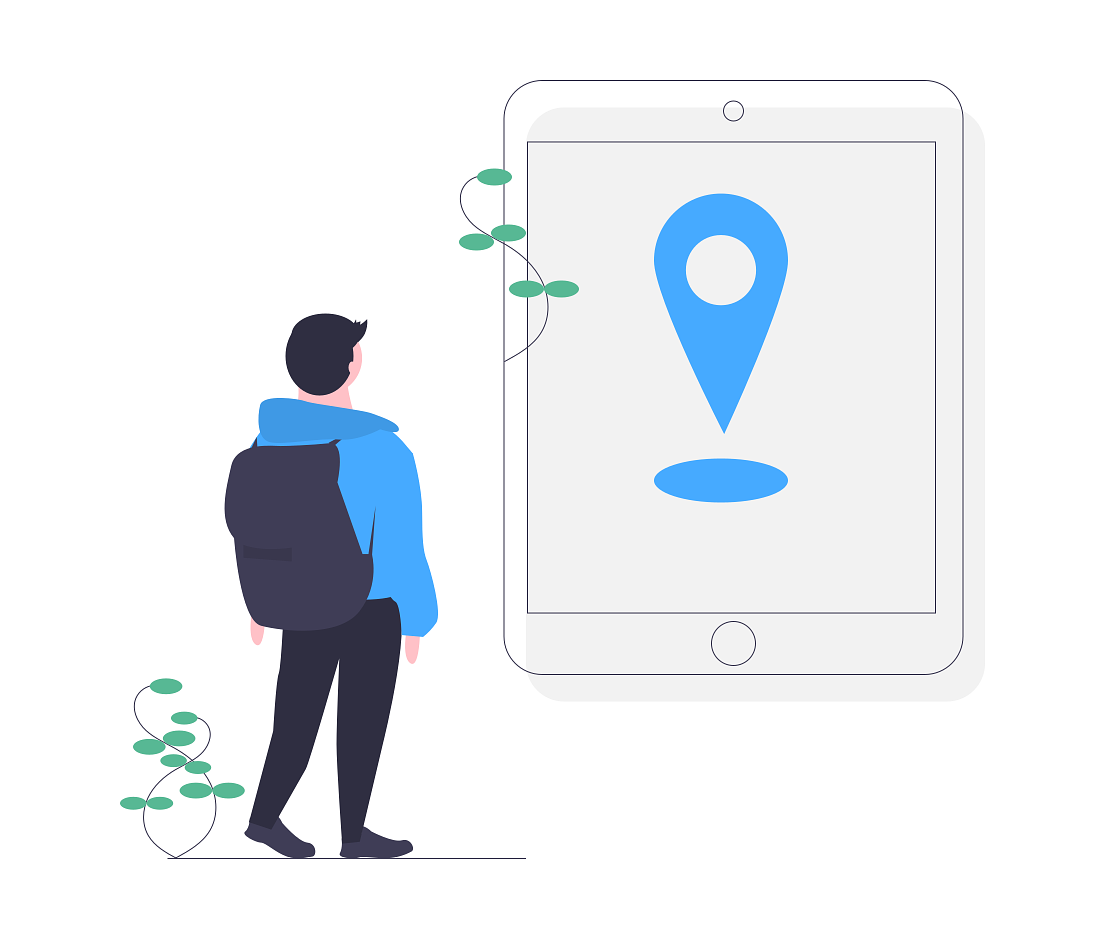
Thankfully, there are some essential on-demand solutions provided by companies today to make daily life easy. These companies are always looking for a competitive edge in technology while keeping an eye on the way to best serve their clients.
On-demand services are providing convenient solutions for increasing business revenues and providing outclass experience to customers. It helps in fixing problems of carpentry, house cleanliness, home appliances, and all other household problems.
The market growth for the on-demand services business has just begun.
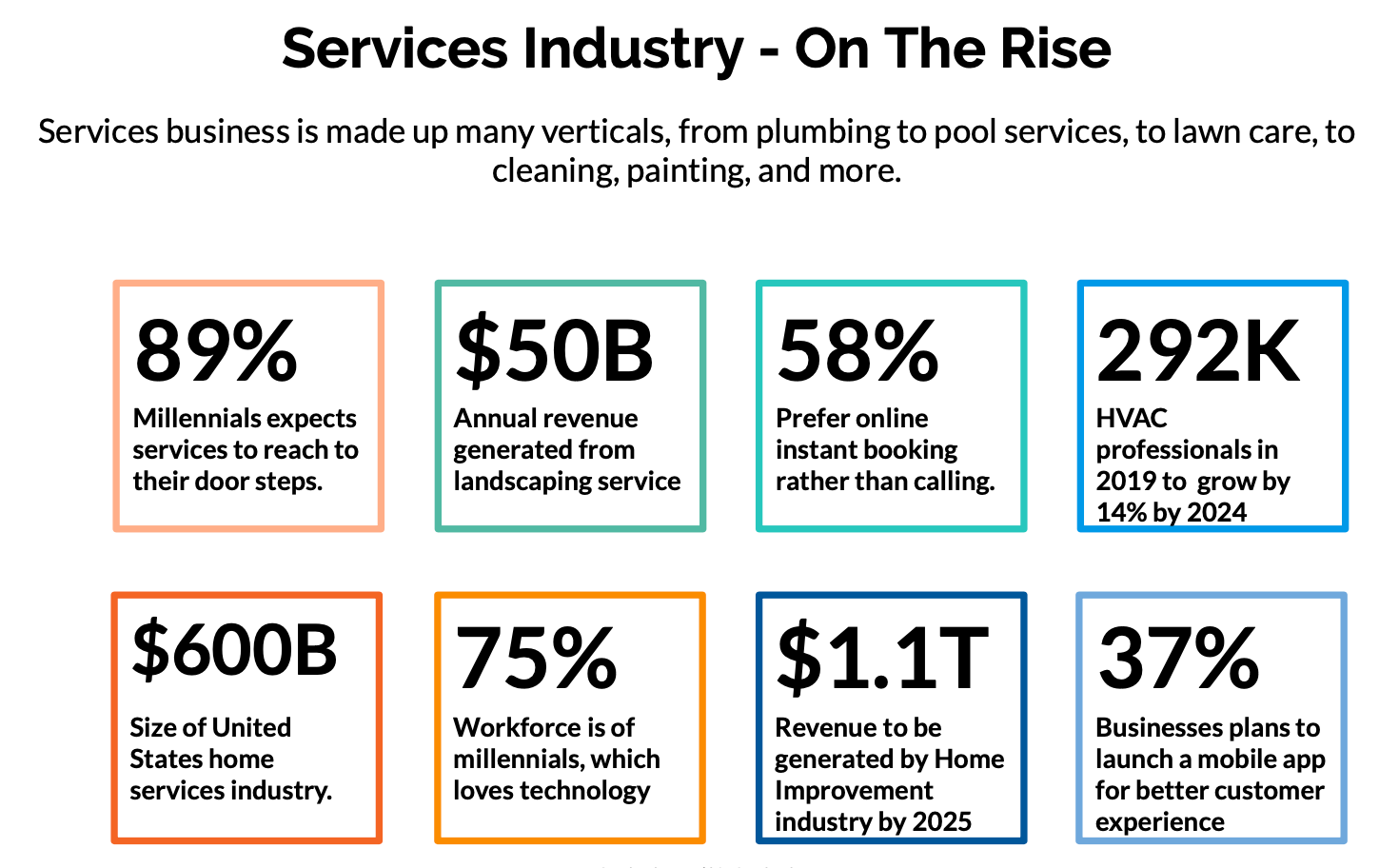
Some established names in it include TaskRabbit, Thumbtack, Drizly, GlamSquad, Postmates, Soothe and Rinse, etc. All these apps are gradually gaining momentum, and they wish to become successful like Uber.
Let’s Start with Marketplace & Business Models

Selecting the correct type of business models can earn huge revenues across the globe for your services business.
Take Amazon as an example; with 300 million active users and 2 million-plus third-party sellers in the pocket, it briefly reached a market cap of over $1 trillion in 2018.
If Uber is able to raise as much as $9 billion in an initial public offering that could give the ride-hailing giant a market valuation of as much as $84 billion.
These platforms connect their customers/vendors and are generating huge revenues without owning any inventory.
Here are a few marketplace models that work well:
In-House
This is an inventory heavy business model, where the business owner has the technicians on the payroll.
The in-house technicians are paid by the business owner for the services provided by his company to the customers.
The business owner accounts for all the revenue and pays a fixed salary to the technicians.
Freelance Marketplace
A pure marketplace model where the platform opens up to the freelancers to sign-up and get the job notifications.
They get paid when they do a specific job and as a revenue model, the platform owners take the commission when a service is completed or a product is sold.
Your business relies on the freelance technicians to provide the services and you take a cut.
Hybrid Model
This model is a hybrid between in-house and freelance models.
You have certain in-house technicians to ensure availability and quality service.
And the platform is also open to freelancers to sign-up on your platform and get job notifications.
Here Are The Revenue Model Options That You Can Use

Listing Fees
Service providers pay only for listing specific services or products on the platform.
Subscription Based
Service providers are charged on a recurring basis to be listed on the portal.
Commission Based
Admin gets a share of every transaction that takes place on their platform.
Lead-Based
Providing a lead/ customer to the vendor and changing them for sending quotes.
Development Options for an On-Demand Solutions.

DIY — Do It Yourself
The marketplace is built from the ground up by the use of programming methodologies.
The benefit is that you are developing the whole software from the ground on your own, so you gain the ownership and access to the source code.
But it requires full in-depth knowledge of programming languages, coding. It also requires team support and takes up a lot of time.
COST
If you are planning to develop the on-demand solution on your own then there is no such development-related expense.
The expenses do kick in when you start integrating third-party software.
Example: SMS or Email gateways, Payment gateways, hosting platforms, etc
This software typically has a subscription-based model, so you pay them on a monthly or yearly basis.
Custom Development
This method involves you to hire a professional coder or an agency who have gathered years of experience in the app development.
Compared to the first method, it takes a very less amount of time in creating the product by taking help of a professional agency.
But you have to provide a definite up-front. When you are just getting your business online it can be a huge expense.
COST
Developing a product from the ground up with the help of an agency will accelerate the development process compared to the DIY method.
But the cost increases by many folds which can become a roadblock for many entrepreneurs.
If the hourly cost is around $150/hour for a US company and if the solution would take around 3 months to develop, then it would cost you roughly around USD72,000.
Subscribing to a SaaS solution.
This is probably the fastest method to launch and validate your idea.
Not every use case will have a SAAS option, but if you find one for your idea, then you can launch your product quickly by just paying a small periodical subscription fee or a one-time setup fee.
Since these are pre-built solutions, it’s difficult to modify and change the appearance of SAAS solutions by they get the job done.
COST
A solution like this could cost anywhere between $10 to $100 as a monthly subscription.
Some of these solutions have a one-time setup fee, which could range from $500 to $5000.
In contrast to the custom development, SAAS is a good bet as you can get your product up and running instantly and with little money.
Validate your idea with SAAS and when the need arises, get custom developed solution.
Here Is the Checklist of Components Needed on Every On-Demand Solution.
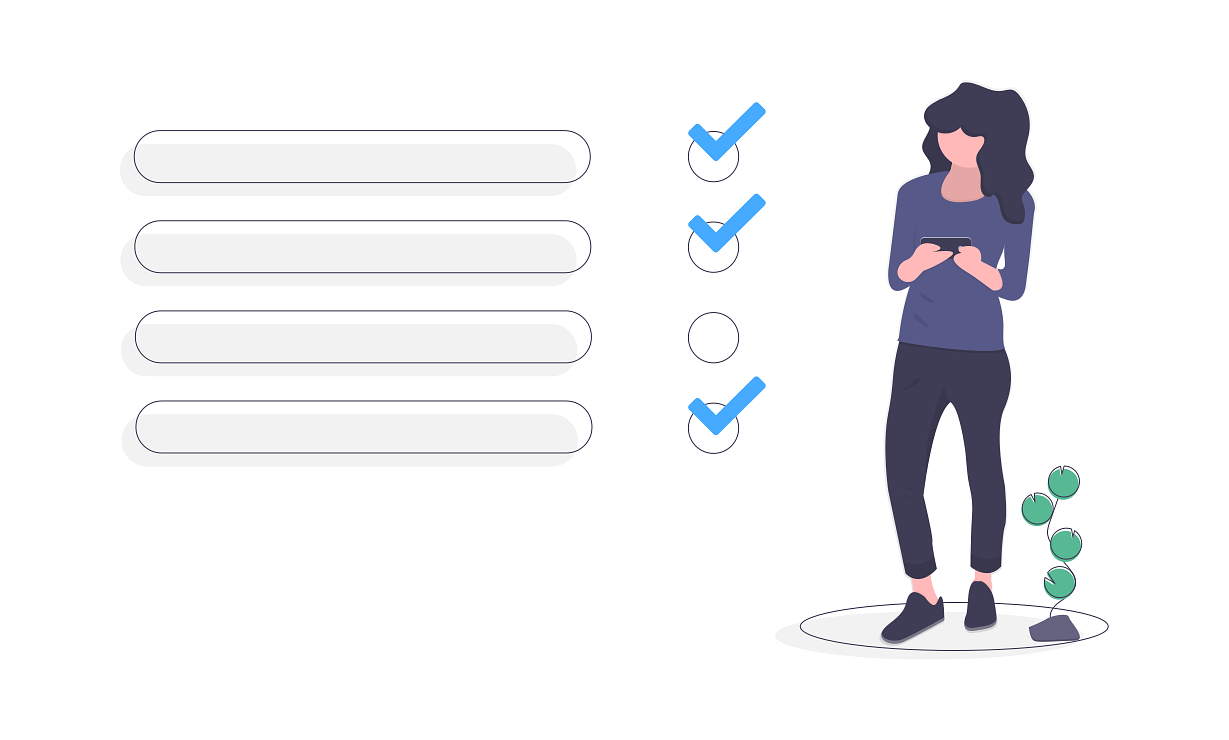
Stakeholders
A) Customers
Stake: Demand and service quality
Customers are true stakeholders of the business in that they are influenced by the quality of service and it’s utility.
B) Service Providers
Stake: Supply and service
Suppliers and vendors trade services with the business and rely on it for demand generation and growth of the business.
C) Business Owner
Stake: Management and operations
Business owner is responsible for connecting the customers and service providers in a seamless fashion.
Customers
At the center of it all, are the customers. The aim of the business is to provide the best customer experience and an extraordinary level of service.
This is the demand side of the business.
Customer’s App
The primary purpose of the app for customers is to provide a good booking experience, the ability to browse through various services, book a service with the option to pay online through the app.
The ability to get notifications and track the service provider’s location.
Service Providers
They provide the service like plumbing, cleaning, etc to the customers and ensure the on-time, quality service.
This is the supply side of the business.
Service Provider’s App
The primary purpose of the app for the service providers is to receive the service requests, accept the requests and fulfill the service while updating its status to inform all the stakeholders.
Business Owner
As a business owner, you are in command of the services provided the customers and hence the ownership also lies with you. It’s important to define service level agreements and ensuring quality service.
Owner’s App
The primary purpose of the owner’s app for the business owner is to have a bird’s eye view of the entire business, manage services and their assignment and completion. Manage all the key stakeholders which are part of the system.
Powerful Features of The On-Demand Services Solution
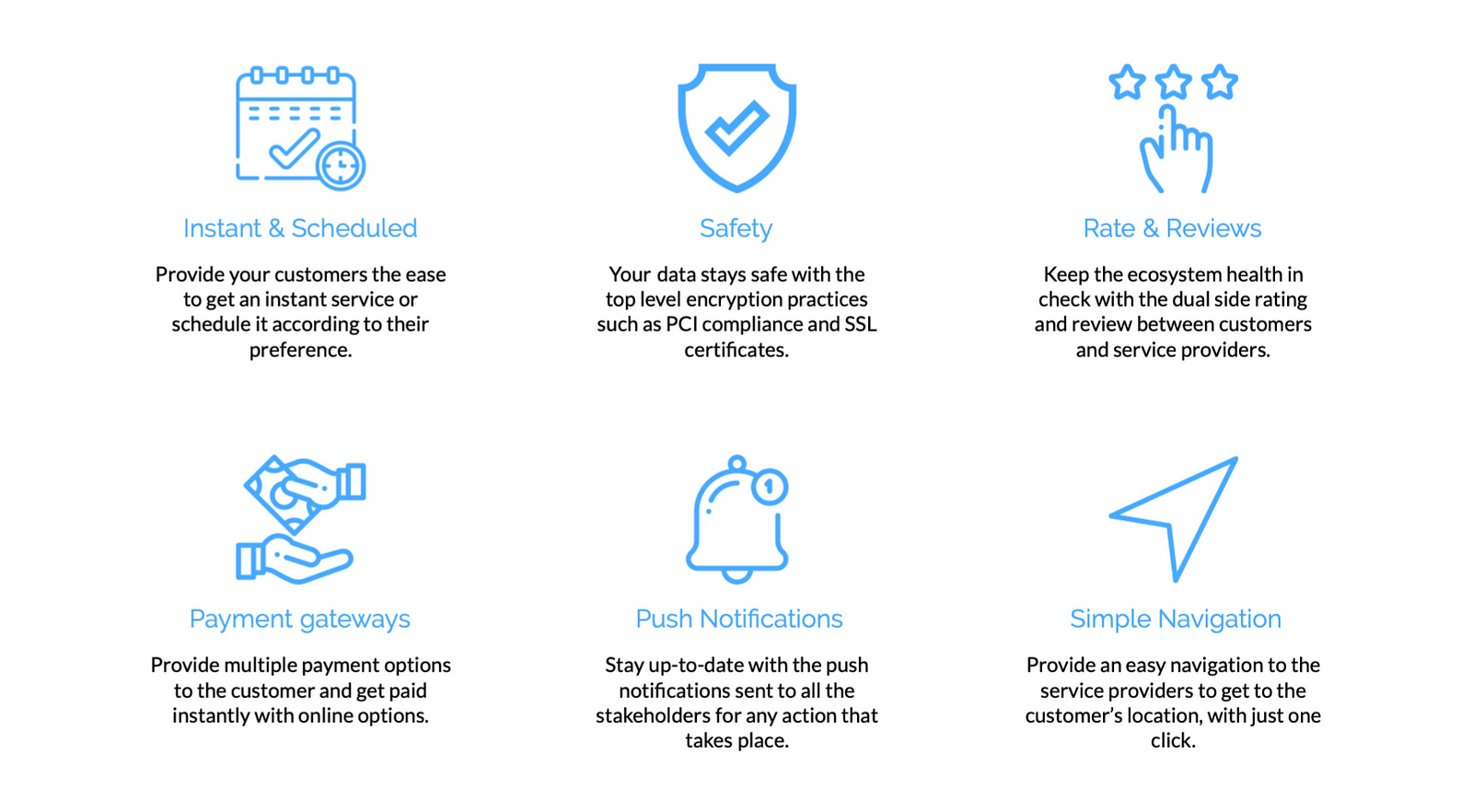
Booking Management
Advanced booking management for the incoming services with powerful filters, multiple views, and full control from the boss app (business owner’s app).
Service Provider Management
Easily manage all your runners (service providers) from the boss app, manage their schedules, add their skill-sets, get the clock-in and clock-out, see their real-time location, and see the accumulated earnings.
Auto-Assignment
This feature allows you to sit back, relax and let the system do the booking assignment to the runners (service providers) based on multiple factors like availability, proximity and skill set, to name a few.
Live Tracking
The real-time live tracking feature helps in getting the current location of the technician’s location to get a better idea of the ETA and keep the customers updated with this view.
Geo-Fencing
Create a virtual boundary around a real-world geographical area to define your serving areas and auto-assign bookings to service providers based on the geo-fences.
Notifications & Alerts
Stay up-to-date with notifications for all the stakeholders whether it’s for a new booking, status update, payments or cancellations. Service providers can view the new bookings alerts with details to accept or reject them.
Scheduling
An essential feature to get the service-on-demand or schedule it based on your preferred date and time. Matches with schedules of various stakeholders and avoid the booking overlapping.
Ratings & Review
Customers get the ability to provide the ratings and reviews to the service providers and vice versa. This helps maintain a healthy ecosystem and easily identify at the outliers.
Payment
Provide various payment options to the customer ranging from cash-after-service, credit card, debit card, net-banking by opting for local and international payment gateways like Stripe, PayPal, Braintree, etc.
Promo Code
Use this feature to run the offers and provide discounts to the customers. Customers can get discounts by adding the promo code they received during a marketing campaign or for the first time bookings.
Analytics & Reports
Visualize your data and leverage the graphs to make data-driven decisions. Export the reports and act on it, to improve and optimize the performance of all stakeholders.
How Will You Grow Your On-Demand Services Business?

Local Listing Pages
If you haven’t already claimed your local business listing on Google, Bing and various other local directories then you are missing out on potential website visitors, phone calls and physical location visits. There are several free listings that can help your business gain online exposure, so make sure you take advantage of these. Moz local is a great tool that can help you identify, manage and audit your local listings.
Here are a few to help you get started:
Build an Email Marketing List
Building a highly targeted email list of potential customers as well as current customers allows you to keep them updated on current sales, promotions and just general information about your business. It is important that your brand remains on their radar so when they are ready to purchase you are the first business to come to mind.
Create a simple opt-in offer on your website and offer something of value such as exclusive early bird notifications or a special savings coupon. To capture emails at a physical business location include a tri-fold with a QR code at your register that your customers can scan with their mobile device to take advantage of your offer.
Create Relationship with Local Media
PR and SEO go hand-in-hand, so any time you can get the media exposure you have the potential to attract new website visitors as well as earn high-quality links to your website. Reaching out to local TV stations and online news publications and introducing yourself is a great start.
Once the connection is established let them know that you would be happy to provide insight regarding your industry if they ever needed it. You will be surprised at how many of these introductions will result in media contacts that will reach out looking for your expert input on a frequent basis.
Content Marketing is the future
Content Marketing can be a remarkable way to draw potential consumers on a set budget.
If you concentrate on crafting extremely informational content that is beneficial than what is already out, you can showcase your expertise in a specific sector which will immediately appeal to your target audience. You can generate a lot of organic traffic by fully leveraging the power of content marketing.
Social Media Is Powerful
To create a true and lasting brand experience, focus on content highlights of your personality, brand and unique selling proposition. Being active on social media allows you to connect to a new audience and introduce them to your brand. Think of social media as a tool to help potential customers get to know what your business offers.
Create compelling social content, create videos, showcase your services, add testimonials, interview thought leaders in your industry and increase the value of both your business and personal brand.
Create A Blog
Blogging on a regular basis can help to build your online authority and improve your organic reach in the search results. It also gives your visitors content to engage with when they land on your website. Since you are extremely familiar with your business you should be able to easily come up with topics that will interest your potential customers.
Guest posting is another great option to feature your content on some existing popular mediums and get in front of thousands of potential customers.
Keep Track of Analytics Regularly.
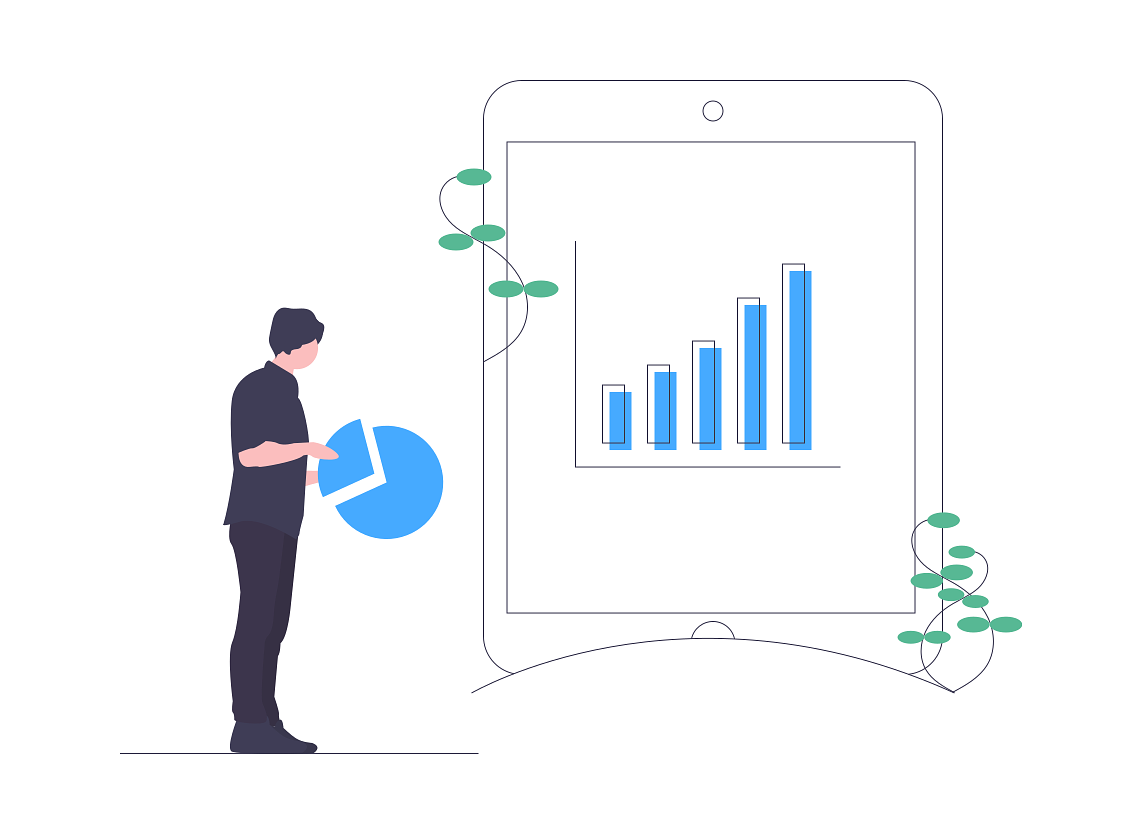
App Downloads
Keep an eye on the number of downloads and how they grow over time. This metric will help you decide if you should invest further in marketing and which channels to prefer. Downloads denote the number of times your app has been installed and is the very first signal of how your app is performing.
New Sign-ups
User acquisition is important to validate your marketing efforts. The number of sign-ups users will indicate the growth of your app. It also shows the relevant interest of the users in your services and other offerings.
Active Users
The active users metric is distinctive than that of the downloads metric in that it weighs how many users are truly using your app apart from downloading and not using it again.
Session Length
The session length of an app is the amount of time from when a user starts the app until they quit using or leave the app. It traces the duration of the connected experience in the app.
Retention Rate
Retention measures how several users come back to your app following their initial visit. Since there’s increased opportunity for your app to be prosperous when users stick with the app, retention is one of the more valuable metrics.
Average Revenue Per User (ARPU)
The Average Revenue Per User (ARPU) is the income generated (on average) by each live person practicing in your app. This is a very comparable metric to Average Revenue Per Account (ARPA), commonly used for SaaS models.
App Ranking
App Ranking is the listing status of your app in an app store. The most popular app marketplaces are the Apple App Store, Google Play, and Amazon Appstore.
Reviews & Feedback
App Store or Google Play reviews have a big impact on your app. It’s the feedback received by your users and spreads as a word of mouth. It’s vital to keep your reviews positive because 4 out of 10 app users believe of app store reviews.
Summary
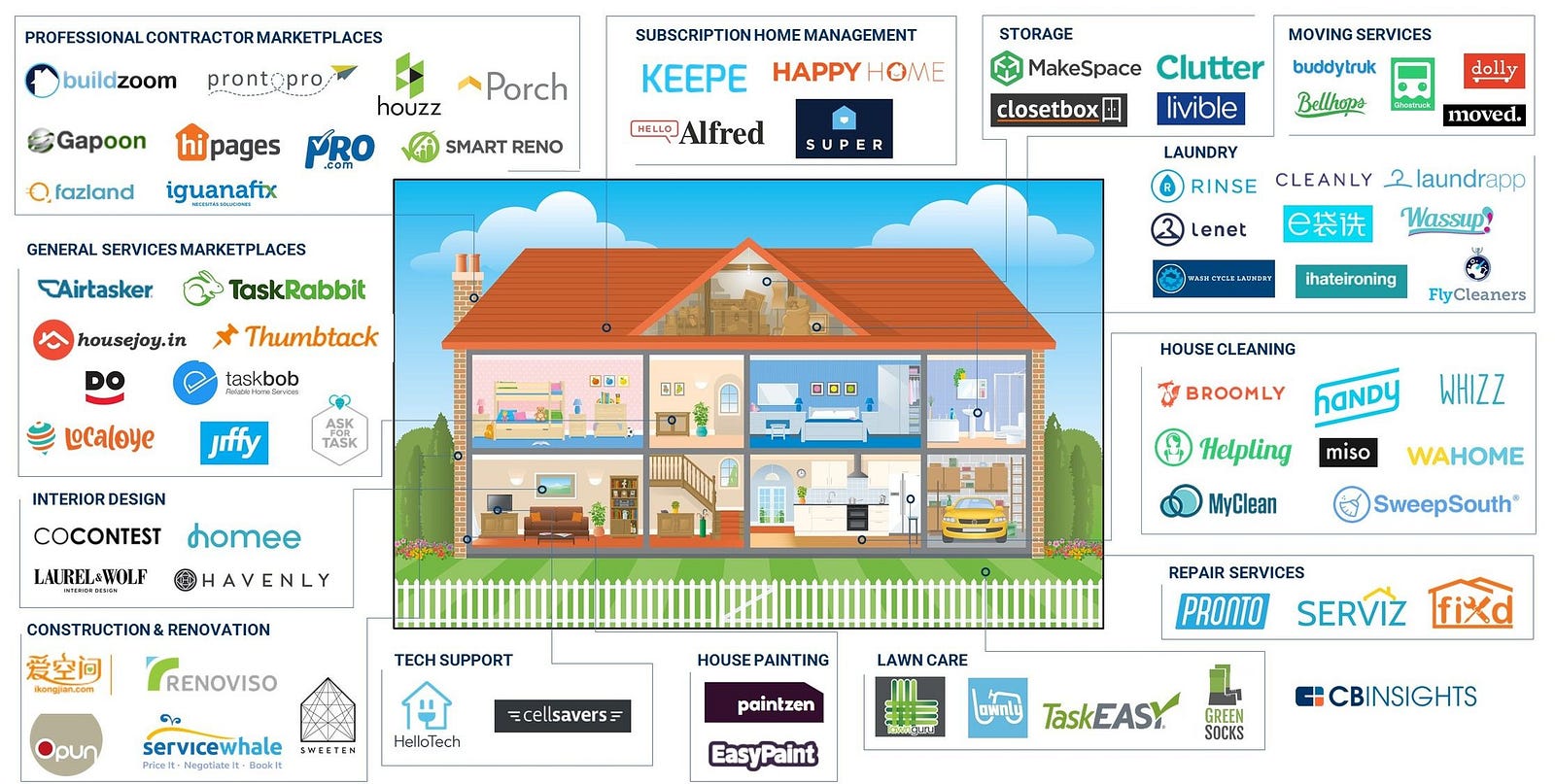
On-Demand Services industry is hot.
The success of platforms like Handy, Hello Alfred, and Helpling has proven that the services industry can be organized, scaled and can be practiced in almost any area of business.
In the coming years, we’re proceeding to see enormous innovation in this area. There’s no better time to start your on-demand services business than today.
Moreover, the time is precise, and the technology is finally developed enough — building a strong on-demand services business is far from a complicated task today.
Having a solid strategy and knowing genuine practices are essential. In this guide, we’ve incorporated the most critical elements you need to comprehend before starting your on-demand services business.
Now, It’s time to take action!